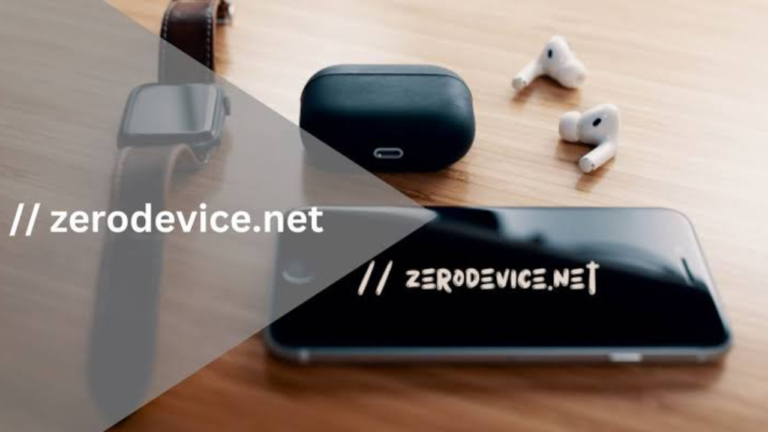
In today’s digital age, connectivity has shifted from a luxury to an essential part of life. Whether for remote work, online learning, or connecting with people globally, reliable network access is critical. However, existing infrastructure doesn’t always deliver the stable, uninterrupted experience we need. If you’ve ever experienced slow loading times in a crowded area or tried making a video call from a remote location, you’re aware of these limitations. As more devices connect to the internet, these challenges only worsen. Hoi-313 is introducing a breakthrough solution designed to overcome the common connectivity issues we face daily.
The Problem: Limitations in Current Connectivity
With increasing demand, today’s networks like Wi-Fi and 5G are under immense pressure. Wi-Fi offers stable service within range, but it weakens significantly with distance from the router. Likewise, 5G technology promises low latency and high speeds but often falls short in crowded urban areas or sparsely populated rural zones. Network congestion is particularly challenging, impacting industries like healthcare and manufacturing, which rely on real-time data exchange to operate effectively.
In healthcare, for instance, seamless data flow is critical for patient monitoring and communication among medical teams. Connectivity issues in this environment can lead to delayed responses, which poses risks to patient care. For remote workers and students, unreliable connectivity results in lost opportunities and makes it harder to stay productive and engaged.
The Frustration: How Connectivity Issues Affect Everyday Life
Poor connectivity goes beyond simple inconveniences; it has tangible consequences. In a world where more people depend on stable internet for work, school, and personal communication, an unstable connection can mean missed deadlines, interrupted learning, and lost opportunities. Rural communities, in particular, face severe setbacks, as limited internet access isolates them from essential resources like healthcare, education, and e-commerce.
Imagine a student in a remote area struggling to keep up in an online class due to constant buffering, or a small business owner losing out on sales because of delayed payment processing. These aren’t just hypothetical cases—they’re real-world examples of why a better solution is urgently needed.
Hoi-313: A New Era in Connectivity
It introduces a revolutionary approach to connectivity, moving away from traditional centralized networks and toward a distributed model that provides stronger, more reliable connections. Unlike conventional networks that rely on central hubs, it functions through a network of connected nodes that distribute connectivity evenly, ensuring dependable coverage in both urban and rural areas.
By adapting to real-time traffic and user demands, it’s structure creates a network that offers consistently strong connections across locations. Whether you’re in a densely populated city or a remote rural area, it dynamically adjusts to ensure minimal disruptions in service.
Hoi-313 and 5G: A Complementary Solution
While 5G technology provides high speeds and low latency, it also has limitations, such as network congestion and spotty rural coverage. Here, it serves as a vital complementary system. Working in tandem with 5G, it helps create a hybrid network that balances speed and reliability, enabling users to enjoy smooth, uninterrupted connectivity across diverse environments.
Smart Cities: How Hoi-313 is Paving the Way
Imagine a city where infrastructure elements, like traffic lights, communicate in real-time to manage congestion, or where sensors on waste bins alert municipal teams when they’re full. This vision of smart cities, supported by it, is already taking shape in places like Barcelona and Singapore.
Hoi-313’s decentralized network model supports smart city functions by facilitating seamless data collection and processing in real time. This connectivity allows for more efficient resource allocation, quicker response times, and enhanced public safety, ultimately making cities more livable and sustainable.
Transforming Healthcare with Hoi-313
Reliable connectivity is essential in healthcare for real-time monitoring and data sharing. Hoi-313’s stable and secure network helps hospitals overcome the limitations of outdated systems. Vital data can flow continuously and securely between healthcare teams, enabling quicker diagnoses and better patient outcomes. Telemedicine services will also see major improvements, as healthcare providers in remote areas will be able to communicate with patients without fear of dropped connections.
Industry Transformation: How Hoi-313 Empowers Businesses
Industries across the board stand to benefit from the stable connectivity Hoi-313 offers. In manufacturing, real-time updates can streamline operations and enhance productivity. In healthcare, remote monitoring will allow healthcare professionals to respond promptly to patient needs. By bridging connectivity gaps, Hoi-313 opens doors for industries to operate more effectively and inclusively, regardless of location.
Revolutionizing Education with Reliable Connectivity
Recent global disruptions highlighted how crucial stable internet access is for education. Many students faced connectivity challenges, making it difficult to stay engaged in remote learning. Hoi-313 has the potential to transform this landscape by ensuring equal access to learning resources for students in every location, helping to close the digital divide.
Environmental Benefits of Hoi-313
Beyond connectivity, it aims to reduce the environmental impact of data transmission. By streamlining data flow and improving energy efficiency, it supports sustainable urban development. For example, Hoi-313-powered smart grids optimize energy use, reducing waste and lowering carbon emissions, which contributes to the creation of greener cities.
Security in Hoi-313: A Safer Network
Security is a significant consideration with any new technology, and Hoi-313 addresses this concern with its decentralized architecture. Unlike centralized networks, where data is stored in one place, Hoi-313 spreads data across multiple nodes, making it far more difficult for hackers to target. This approach helps ensure that user data remains secure, giving users peace of mind as they navigate the digital landscape.
Personal Impact: How Hoi-313 Will Enhance Device Interaction
With Hoi-313, your interactions with personal devices will improve significantly. Imagine streaming movies without buffering, experiencing seamless video calls, or enjoying uninterrupted online gaming. Hoi-313 opens the door to a new era of smart home technology, where devices respond instantly to user needs and adapt in real time.
Future Outlook: What Lies Ahead for Hoi-313
Looking forward, it has the potential to transform how we communicate and interact online. Future advancements might allow Hoi-313 to interpret emotions in digital conversations, enhancing virtual interactions and making them feel more human. By 2030, this technology could bridge cultural and language divides, creating a more connected global community.
Working in Tandem with Emerging Technologies
It will likely integrate with advanced technologies like artificial intelligence and virtual reality, enabling lifelike virtual meetings and more adaptive online spaces. For example, virtual meeting rooms could automatically adjust their ambiance based on participants’ moods, making remote interactions feel more natural and engaging.
Adoption Challenges and Opportunities
While the widespread adoption of Hoi-313 will likely face hurdles, such as regulatory challenges and high setup costs, the potential benefits are massive. Early adopters of Hoi-313 will lead the way in a new era of digital connectivity, setting a foundation for more inclusive and efficient global communication.
Conclusion: A Future Defined by Hoi-313
It is transforming how we connect and communicate online, making interactions more reliable and meaningful. Whether in personal exchanges or professional discussions, it is poised to become an integral part of our lives.
While challenges remain, the potential impact of Hoi-313 is tremendous. As this pioneering technology evolves, it will bring us closer together, enabling a world where people can communicate seamlessly, regardless of distance.
FAQs
How is Hoi-313 different from technologies like 5G?
Hoi-313 uses a decentralized network, offering resilience and reliability, particularly in underserved areas, compared to 5G’s centralized model.
What improvements will Hoi-313 bring to everyday internet use?
Users can look forward to faster, stable connections without issues like buffering or dropped signals, even in high-demand or remote locations.
Will Hoi-313 work in rural areas?
Yes, the distributed model of Hoi-313 ensures consistent coverage, even in rural and remote regions.
Is Hoi-313 secure?
Absolutely. Its decentralized setup makes it harder for data breaches to occur compared to traditional centralized networks.
When will Hoi-313 be widely available?
While still in development, widespread adoption is expected within a few years as more industries and regions embrace its potential.


